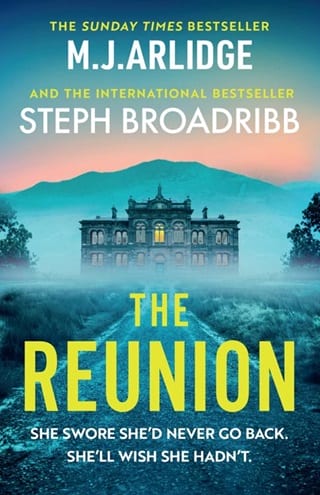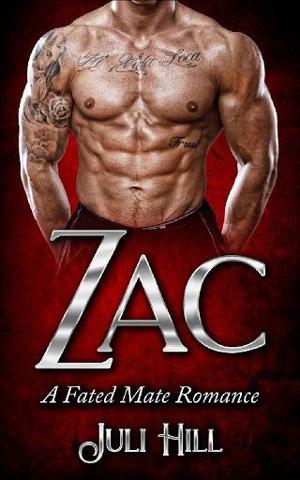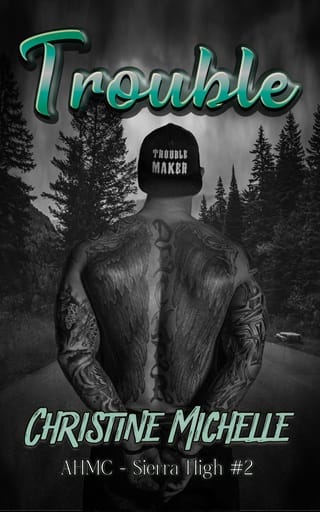Chapter 14
Chapter 14
Alone in the incident room, Jennie stands in front of the whiteboard, her mind whirring. The feelings of betrayal and hurt that she’s harboured all these years about her friend ditching her have finally started to subside, but in their place are new emotions: rage, injustice, and most of all, the absolute necessity to find out who killed Hannah. Paul Jennings had inflicted horrific injuries on his daughter. Is it possible he murdered her?
Blinking rapidly, Jennie tries to hold back tears and focus on the facts. Scanning the whiteboard, she takes in the information the team have gathered so far. In under forty-eight hours, they’ve found fundamental flaws in the original misper case and uncovered new evidence, and had an admission of guilt, of Paul Jennings’ violence towards his daughter. But even with his history of lashing out in anger, Jennie isn’t fully convinced Hannah’s father was her killer.
She gazes at the photo of Hannah taped up in the centre of the whiteboard. It’s the photo many of the papers used to accompany their articles back when Hannah first went missing – a picture Jennie herself had taken as part of her art portfolio, a close-up portrait of Hannah in black and white. Even in the two-dimensional, make-up-free image, she’s never seen a person who looks as truly alive as Hannah. But there’s more than just her beauty on display here. The image shows a fragility, a vulnerability, that was usually hidden behind Hannah’s bold personality; a deeper sadness rooted in her friend’s troubled home life.
The irony is that things were looking up for Hannah in some ways. In the weeks before she’d gone missing, she’d been in contact with her mum, who’d returned to the UK after living in Spain. Hannah had confided in Jennie that when they moved to London, she was going to arrange a reunion. Finally, after so many years without her mum, Hannah was going to see her again. Jennie had hoped it would free her friend from the sadness she tried so hard to disguise. Instead, Hannah was murdered, never seeing her mum or getting closure. The injustice of it stabs at Jennie’s heart.
‘How did it go with the dad?’
Jennie turns to see Zuri standing in the doorway of the incident room. ‘He admitted getting violent with Hannah on the night she disappeared, and that he was fired earlier that evening for being drunk at work, but he strongly denied being in the school basement.’
‘Did you believe him?’ asks Zuri, stepping into the room and joining Jennie beside the whiteboard.
‘Maybe,’ says Jennie, thoughtfully. ‘He pointed the finger towards Hannah’s art teacher.’
‘I assessed the microfiche archives and read through a lot of the media articles on the case,’ says Zuri. ‘There was a lot of speculation about her and the teacher, Duncan Edwards.’
‘Yeah,’ says Jennie. ‘From the limited notes in the original misper file it looks as if the investigation team were still trying to get to the bottom of the rumours when Siobhan Gibbons came forward and the case was closed. Have we had any luck locating Edwards yet?’
‘Not yet. We’ve got some old addresses but after the early 2000s he seemed to fall off the grid. Naomi is on it, though.’
‘Okay, good. We need to talk to him as a priority.’
Zuri nods, then turns towards the whiteboard, frowning.
From her DS’s expression Jennie can tell she’s got something on her mind that she’s not sharing. ‘What is it?’
Zuri stays silent a moment, then turns to face Jennie. ‘I think the investigation is too narrow. Focusing just on Hannah’s dad and the art teacher is what the original investigation did, and we know they got things wrong.’
‘But they closed the case before they knew all the facts,’ says Jennie, surprised by the strength of feeling in Zuri’s voice. ‘Who knows what they would have found if they’d stayed on them.’
‘We’re being too blinkered,’ says Zuri, emphatically. ‘We have to widen the search.’
‘I know what I’m doing,’ Jennie replies. Zuri’s a friend and they work well together usually. She doesn’t want to pull rank here; she needs to get her DS onside. ‘Look at all we’ve discovered in just a couple of days.’
‘Yes.’ It’s clear Zuri isn’t convinced. ‘And we could uncover a lot more if we broadened out the investigation to look at more people – like those who used the basement darkroom. There’s already discrepancies coming to light. If we dig even deeper we could find more.’
Jennie bristles. Until now Elliott might have withheld the information about seeing Hannah and Paul Jennings in the basement on the night she disappeared, but that doesn’t make him a suspect. Sure, either Paul Jennings or Elliott has to be lying about that night, but her money is on Hannah’s violent dad.
‘They were just kids mucking about in a basement. Let’s prioritise the strong leads first, the dad and the teacher. I think we’re on the right track with them.’
Zuri frowns, confused. ‘They weren’t really kids, they were eighteen. We need to pursue as many leads as we can.’
Jennie knows Zuri’s right, but she’s still reluctant to back down. Her old friends can’t be involved, surely? They all loved Hannah. ‘I was at the school. I never got any vibes that—’
‘You’re not being objective about the case.’ Zuri shakes her head, not attempting to hide her disappointment. ‘Just because you went to the school back then, it doesn’t make you right.’
Jennie says nothing. She knows Zuri has good instincts. Glancing back at the board, at Hannah, she feels a wave of emotion rise up and fights to push it back down. She has to do whatever it takes to get her friend justice. And although she doesn’t want to think that their friends had anything to do with what happened, she knows that Zuri is right – they should be looking at everyone who had access to the basement and was close to Hannah. The list of Hannah’s friends isn’t particularly long, and the number of people who frequented the basement is small too, limited to those who were allowed to use the key.
No matter how unpalatable it is, although Paul Jennings and Duncan Edwards are currently the key persons of interest, there could be others in the frame for Hannah’s murder: people Jennie knew and liked. If she’s going to do the right thing for Hannah, they have to be thorough. ‘Okay.’
‘Okay?’ says Zuri, raising an eyebrow.
‘We’ll widen the search,’ says Jennie quickly, before she changes her mind. ‘Paul Jennings is still in play, as is Duncan Edwards. We’ve spoken and discounted the drainage workers and the school secretary, but we still need to speak with the headmistress, and the janitor. We also need to interview Hannah’s close friends – Lottie Varney, Rob Marwood, Simon Ackhurst – and we should speak to Elliott Naylor again. Let’s double-check where they were on the ninth of June 1994. And get Naomi to compile a list of any other groups that used the basement space in case we want to take the search even wider.’
‘Got it,’ says Zuri, scribbling down the names in her notebook. ‘Do you want background checks, financials and employment records?’
Jennie feels disloyal to her old friends, but she takes the decision anyway. ‘Yeah, do the full work-up; we need to explore every avenue.’
Zuri smiles. ‘Great, I’ll get onto it. Talking to all Hannah’s friends is the right call.’
Jennie forces herself to smile back. The list doesn’t have all Hannah’s friends on it.
She didn’t include her own name.
 Fullepub
Fullepub 



